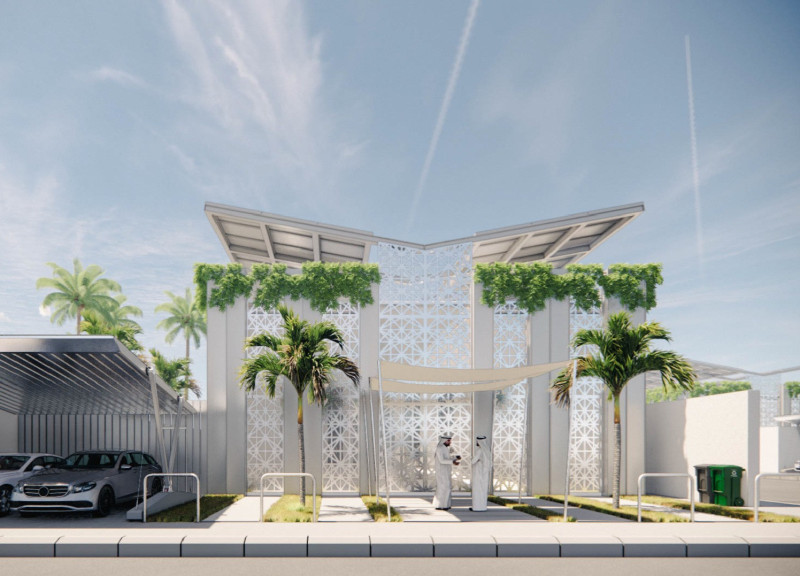5 key facts about this project
At the core of the project is the intent to create a space that fosters interaction and connectivity, both among individuals and with the natural landscape. The design champions an open and fluid layout that encourages collaboration and engagement, reflecting modern social dynamics. Public areas are strategically positioned to maximize accessibility and visibility, allowing for a seamless flow between various functions within the structure. This thoughtful arrangement aids in forming a cohesive community atmosphere while ensuring that private spaces provide comfort and seclusion when necessary.
The material palette has been selected not only for its visual appeal but also for its sustainability and functionality. Key materials include concrete, glass, steel, and timber, each chosen for their structural integrity, aesthetic properties, and environmental performance. Concrete provides a robust foundation and offers thermal mass, while extensive use of glass facilitates natural light infiltration, creating inviting interiors that minimize reliance on artificial lighting. Steel is employed for structural elements, contributing to both the resilience and sleekness of the overall design, while timber adds warmth and texture, enhancing the user experience within the space.
Unique features of the project include its innovative roof structure, which integrates green technology to support sustainability efforts. The landscaping on the roof not only contributes to thermal regulation but also enhances biodiversity in the urban environment, creating a habitat for local flora and fauna. This integration of nature into architectural design exemplifies a commitment to environmental stewardship and presents a model for future developments.
In addition, the architectural design embraces the principles of biophilic design, aiming to strengthen the connection between occupants and nature. This is achieved through strategic landscaping, water features, and interior gardens that are woven throughout the common areas and walkways. By incorporating these elements, the project resonates with occupants on a psychological level, promoting well-being and productivity.
The design also considers the local climate and geographical context, adapting its structural and material choices to respond effectively to environmental conditions. Through passive design strategies, such as natural ventilation and shading, the project achieves energy efficiency while ensuring comfort for its occupants. The sensitivity to context extends beyond the physical environment, as the features and functions of the building reflect the cultural narratives and needs of the local community.
As one examines various components such as the architectural plans, sections, and designs, it becomes evident that each detail has been executed with precision and intent. The attention to scale, proportion, and texture enhances the overall experience, inviting users to engage with the built environment fully. By exploring the nuances of this architectural project, one can appreciate the intricate interplay between form and function, as well as the broader implications of sustainability and community integration in contemporary design.
This project stands as a case study in how thoughtful architecture can shape spaces that are not only functional but also enriching to the human experience. Readers are encouraged to delve deeper into the project's presentation to uncover more about its architectural ideas and innovative design solutions, which speak to current trends in sustainable and community-focused architecture.


























